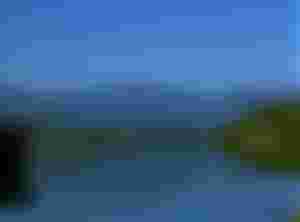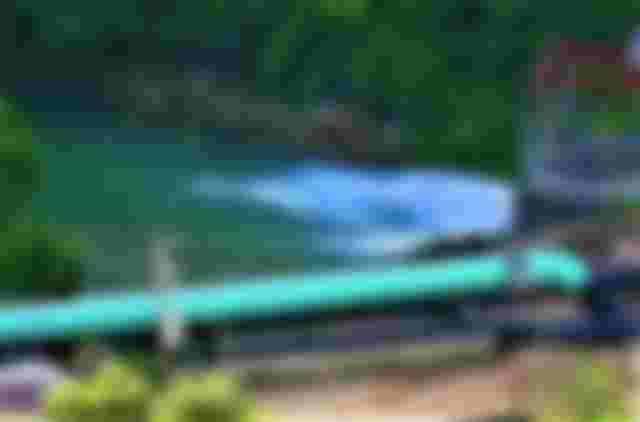Congratulations and blessings to all, today I want to share some photographs, of which, some could be worthy of postcards, for the beauty of the landscape. I took them, a few years ago while we were making a stop to rest my legs, after a long road trip. On that occasion we were coming down from the town of Caripe and headed to the town of San Antonio del Golfo. The plan was, to stop in San Antonio, to taste for breakfast some delicious fish, with salad and "arepitas".
Felicidades y bendiciones para todos, hoy quiero compartir unas fotografías, de las cuales, algunas podrían ser dignas de postales, por la hermosura del paisaje. Las tome, hace algunos años mientras realizábamos una parada para descansar las piernas, después de un largo recorrido por carretera. En esa oportunidad veníamos bajando del pueblo de Caripe y nos dirigíamos a la población de San Antonio del Golfo. El plan era, detenernos en San Antonio, para degustar para el desayunar unos ricos pescaditos, con ensaladita y arepitas.





Well, returning to the place that I show you in the images, it is the popularly known as “Clavellinos Reservoir”, however, formally this engineering work was baptized with the name of “Presa Ingeniero Rafael Vega León”. In hydrographic terms, it is classified as an artificial lake, and is located in my native and beloved state of Sucre, Venezuela, at an altitude of 291 meters above sea level. It was built with the purpose of supplying drinking water to the Sucre state. Subsequently, due to water shortage problems in the Nueva Esparta state, the Clavellinos reservoir also goes on to supply the Neoespartan population with the vital liquid.
Bueno, volviendo al lugar que le muestro en las imágenes, se trata del popularmente conocido como “Embalse Clavellinos”, sin embargo, formalmente esta obra de ingeniería, fue bautizada con el nombre de “Presa Ingeniero Rafael Vega León”. En términos hidrográficos, clasifica como lago artificial, y se encuentra ubicado en mi natal y querido estado Sucre, Venezuela, a una altitud de 291 metros por encima del nivel del mar. Se construyo con el propósito de surtir de agua potable al estado Sucre. Posteriormente, debido a problemas de escasez de agua en el estado Nueva Esparta, el embalse Clavellinos también pasa a surtir del vital líquido a la población Neoespartana.





This important construction was put into operation in 1966. It covers a total area of 1,050 hectares, with a capacity of 131 million cubic meters. Today Clavellinos, after 53 years of operation, unfortunately is very deteriorated. Years of lack of maintenance, illegal water intakes, extensive periods of drought, among other factors, have left a terrible mark on such an important source of drinking water. At present, it is impossible for him to efficiently fulfill the purpose for which it was built. This situation has been pitifully translated into a very serious shortage of the vital liquid in the Sucre and Nueva Esparta states.
Esta importante construcción, fue puesta en funcionamiento en el año 1966. Se extiende por una superficie total de 1.050 hectáreas, con una capacidad de 131 millones de metros cúbicos. Hoy día Clavellinos, después de 53 años de funcionamiento, lamentablemente se encuentra muy deteriorada. Años de falta de mantenimiento, tomas de agua ilegales, extensos períodos de sequía, entre otros factores, han dejado una huella terrible en tan importante fuente de agua potable. En la actualidad, le es imposible cumplir eficientemente con la finalidad para la cual fue construida. Esta situación lastimosamente se ha traducido en una gravísima escasez del vital líquido en los estados Sucre y Nueva Esparta.





Content and photographs of my intellectual property
Technical information
Camera: Pentax * istDL
Lens: Pentax 18-55
Lighting: Natural Light
Location: Clavellinos Reservoir, Monaga State, Venezuela
Contenido y fotografías de mi propiedad intelectual
Información Técnica
Cámara: Pentax * istDL
Lente: Pentax 18-55
Iluminación: Luz Natural
Locación: Embalse Clavellinos, Estado Sucre, Venezuela









